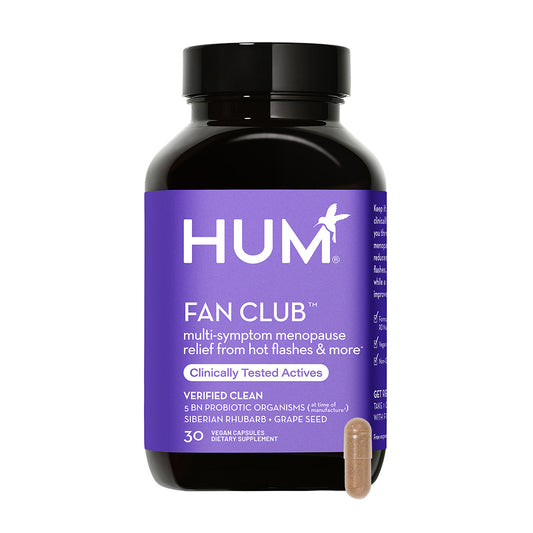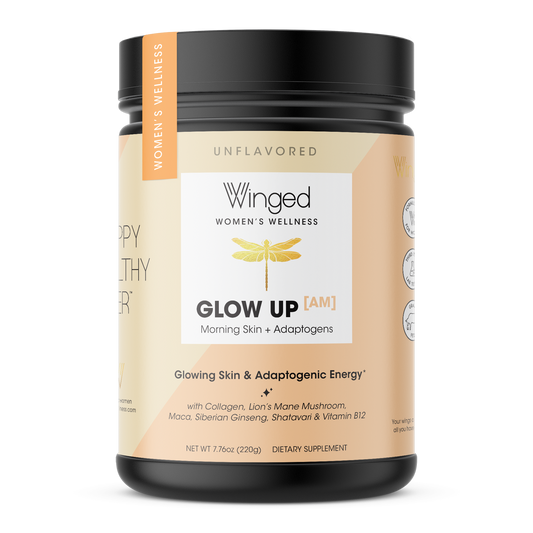You're not alone in experiencing headaches. They're quite common. It’s estimated that 50-75% of adults worldwide have had a headache in the past year. And among females between the ages of 50 and 65, it's around 30%.*
What are the 4 types of headaches?
If you’re not a neurologist, it could give you a headache trying to figure out what happens when we have a headache (See what I did there?). Let’s break it down. First, there are 4 different types of headaches:
- Migraine. They’re more common in females because of hormonal influences. Migraines are caused when the brain releases certain chemicals that cause pain around the nerves and blood vessels in the head. Migraines are often recurring, can feel like a pulsating sensation, can last for hours or days, are made worse by physical activity, and often include feelings of nausea. One-third of people with migraines may also experience migraines with aura. An aura is when someone sees spots, flashes, zig-zag patterns, or other disturbances in both eyes. Some people may also experience numbness or tingling.
- Tension-type headache. This type of headache is often described as pressure or tightness, often like a band around the head. It can sometimes spread into or from the neck. The cause is often associated with stress or musculoskeletal issues in the neck. It’s also more common in females.
- Cluster headache. These headaches occur much more often for males and can occur up to several times a day. They're characterized by extremely severe, but brief, headaches that are focused in or around one eye. There may be tearing or redness in the eye, the nose may run or feel blocked, and the eyelid may droop.
- Medication-overuse headache. This type of headache is caused by long-term and excessive use of medication to treat headaches. It can occur on most days, is persistent, and often worse when you first wake up.
Why do headaches hurt?
There are two main parts of the body involved in headache pain — the trigeminal nerve and the thalamus.
The are 12 pairs of nerves, called the cranial nerves, which start at the base of the brain and send signals to your brain and other parts of your head, neck, and torso. The trigeminal nerve is the nerve related to headache pain. It sends information to the brain about touch, pain, temperature, and vibration in the head and neck.
The thalamus is a part of the brain that controls the body’s sensitivity to light and noise. It sends messages to parts of the brain that manage awareness of pain and our emotional response to it. It’s the brain’s relay station for pain sensations.
The brain itself doesn't have any pain-sensitive nerves and doesn’t feel pain. A headache occurs when pain-sensitive nerve endings (called nociceptors) react to a headache trigger and send messages through the trigeminal nerve to the thalamus, bringing awareness to the pain. Common triggers can include stress, certain foods or odors, or the use of medications.

Does menopause cause headaches?
As with other menopause-related symptoms, headaches, especially migraines, are related to hormones. Scientists don’t know why, but it’s clear that migraines are more of a concern for females. They’re twice as likely to have migraines compared to males.
Some people get headaches during monthly cycle. These headaches are called menstrual migraines. They often happen a few days before or during the first few days of a person’s period. This is because estrogen levels normally drop during this time, even for those who are pre-menopausal.
The decreasing levels of estrogen, starting in perimenopause, can cause headaches to increase for some people. And migraines during menopause are pretty common — 10-29% of people report having a migraine during menopause. Most people will see an improvement in their migraines postmenopause.
It’s believed that headaches worsen during perimenopause because the normal hormone cycle is disrupted and for some people, their periods will come more often. For many people who experience menstrual migraines, menopause brings about the end of their periods and their migraines.
For those who experience a surgical (or induced) menopause, migraines seem to be more common when compared to those who experience spontaneous menopause (menopause that happens naturally).
What helps menopause headaches?
Most headaches resolve on their own either with lifestyle changes or when treated with non-prescription pain relievers like nonsteroidal anti-inflammatory drugs (NSAIDs). More severe headaches, especially ones that occur frequently, may require prescription medications to treat.
For some people, there's a strong association between experiencing migraines and experiencing anxiety and depression. Many of these treatment options can address both migraines and some mood-related symptoms.
Medication for headaches
While menopause hormone therapy (MHT) may be helpful for many symptoms of menopause, it can make migraines worse for patients using systemic MHT. Some smaller studies have shown that people using transdermal estradiol (e.g., skin patch to administer a lower dose of MHT) didn't experience an increase in migraines. For those who have migraines with aura who take MHT, there may also be a small increase in stroke risk.
It's best to talk to your doctor about what might work best for you and if you have any questions or concerns about your headaches or what might be causing them.
Alternative options for menopause and perimenopause headache relief
There are also non-medication options that may help decrease migraines.
- Acupuncture. In one study, frequent acupuncture treatment (3 times per week for 12 sessions) showed a decrease in migraine frequency.
- Vitamin E. Studies show that Vitamin E can improve migraine severity and may help reduce the number and severity of hot flashes. Nuts, leafy greens, and whole grains are all good sources of vitamin E. Ask your doctor if a supplement may also help you.
- Aerobic exercise (i.e., cardio). A few studies have shown that aerobic exercise decreases the frequency of migraines, as well as reducing stress and pain severity.
- Yoga. Studies have shown that frequent yoga practice was found to decrease migraine severity and frequency. It also showed an improvement in anxiety and depression.
Many of the studies related to these options for relief only show evidence when that option is used very frequently. For most of us, that isn't realistic or doable. While some of these options (yoga and aerobic exercise) have other health benefits, talk to your doctor before trying them to help decrease your migraines.
Lifestyle changes that help prevent migraines
During perimenopause, if you notice that your migraines seem to get worse just before you have a period, consider these techniques to help prevent migraines:
- Keep a consistent sleep schedule. Try to get the same number of hours of sleep each night.
- Eat smaller, more frequent meals. This can help manage your blood sugar levels. For some people, missing meals or going too long without food can trigger migraines.
- Minimize stress. Look for healthy coping techniques that work for you, including journaling, regular exercise, and other mind-body relaxation techniques.
If you’re concerned about the frequency or severity of your headaches, talk to a healthcare provider.
*Data from Attitudes & Usage study conducted in August 2021 with 4,578 female participants ages 40-65. Funded by Kenvue.










1 comment
I would like to know what you lady’s are doing to help your headache and mental part of this menopause